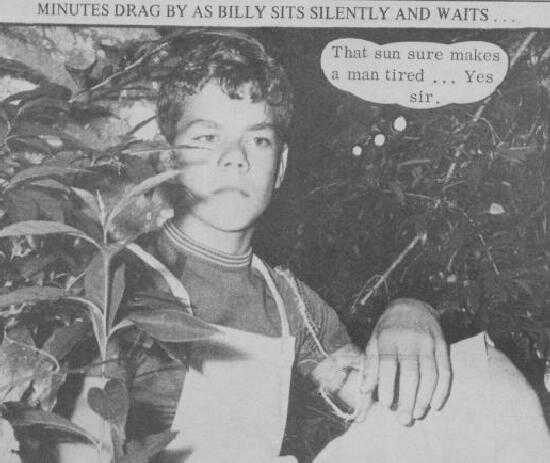
Figure 1.-- The photo comic books are published in blasck and whire. This is a frame from the Billy series.


Figure 1.-- The photo comic books are published in blasck and whire. This is a frame from the Billy series. |
A South African reader has provided us some information on what seems to have been a distinctly South Africa genre--photo comic books. We are sure that photo comic books were published. A South African reader provides us information on this purely South African phenomenon - the photo comic story book. As I now write I realize it's a huge and fascinating subject which can give a wealth of information of the social fabric in it's day. Another feature that enjoyed huge success and was immensely popular with all sectors of the public was the photo-comic book. Some of the book titles became household names and were followed with fervour. Seeing that they were relatively cheap, they were
very accessible and there was a plethora of titles. Republican Press, despite fierce competition from competitors, was the most
successful publisher with the most sought after titles.
Another feature that enjoyed huge success and was immensely popular with all sectors of the public was the photo-comic book. Prior to television, the photo comic-book phenomena was hugely popular in this country as a leisure activity. Some of the book titles became household names and were followed with fervour. Seeing that they were relatively cheap, they were very accessible and there was a plethora of titles.
Republican Press, despite fierce competition from competitors, was the most successful publisher with the most sought after titles. Due to the almost insatiable demand for photo-comic literature, many companies opened up with there own titles.
Several of these titles that became household names in South Africa. Some were actually
quite silly and outrageous and did not last long. Others unexpentantly became very popular and cult like.
'Sister Louise' was a benevolent nurse who was always to the rescue for distraught families who had a sick child (or was knocked over by a car), a sick mother about to give birth and similar stories in that vein. Another well know title was 'Mark Condor' - a suave action man in a suit who had an eye for the ladies as he got involved with all sorts of bad guys and espionage.
'Billy' is an obscure title that most probably was an attempt to capture a slice of the huge market but was not successful. It features the adventures of a 13 year old orphan boy looked after by a custodian during the 'Western' (cowboy) times. Whilst the authenticity of Western photo-comics is somewhat problematic, there were many titles and were very popular with the public. In the cover Billy wears a denim type clothing with a somewhat modern looking type t-shirt. On the other cover Billy slugs it out with an Indian boy when Billy catches him disturbing a bird trap he has set. They later become big friends when they catch a gang of wanted crooks. Billy' appaers to have been published in the late 60s or early 70s (judging by the cover price). Ironically, the denim suit Billy is wearing does look more modern but it's most certainly early 70s. A South African reader reports, "If I'm not mistaken, the photo-comic were published in indeginious languages as without a doubt, the
publishers would not have over looked such a huge market.
Another popular title was 'Chunkie Charlie'. Chunkie was a huge congenial black man (it was unusual in apartheid South Africa that the white population took a liking to a black comic book hero) that wore a large tatty overcoat that had magical qualities that often saved the day. If it was required that somebody needed, say, a telephone, Chunkie would put his hand into the inside of his coat and promptly pull a telephone out that would work. It was the norm to pull out toolboxes, items of furniture, engine blocks, sports equipment and suchlike during the course of the stories.
One of the most popular titles was 'See' published by Republican Press. It had an Afrikaans equivalent titled 'Kyk'. This issue seems to have been published in 1976.
The 'See' photo-comic stories were mainly touching human drama stories and was well received by the public. These publications are now some 20 odd years old and although by today's standards, the quality of the photographs are not good, they now give wonderful depictions of fashion, hair styles, cars and urban environment of the day.
'Tessa' was another immensely popular title that featured a sexy Modesty Blaise type girl who seemingly was always wearing a bikini as she high kicked herself out of all sorts of
dangerous situations. Most popular of all was 'See' and it's Afrikaans equivalent 'Kyk' which featured romance stories.
I am not sure when these photo comic books were forst published. They appear to have been especially popular in the 1960s and 70s. Yjey began to decline in popularity during the 1980s. Local comic books are still published today though are for diverse and 'fringe' markets such as 'Bitter Komix' that parodies current events and people.
Navigate the HBC literary pages' Historical Clothing Web Site:
[Return to the Main South African comic book page]
[Return to the Main literary page]
[Return to the Main South African page]
[Introduction]
[Activities]
[Biographies]
[Chronology]
[Clothing styles]
[Countries]
[Bibliographies]
[Contributions]
[FAQs]
[Dutch glossary]
[Satellite sites]
[Tools]
[Boys' Clothing Home]
